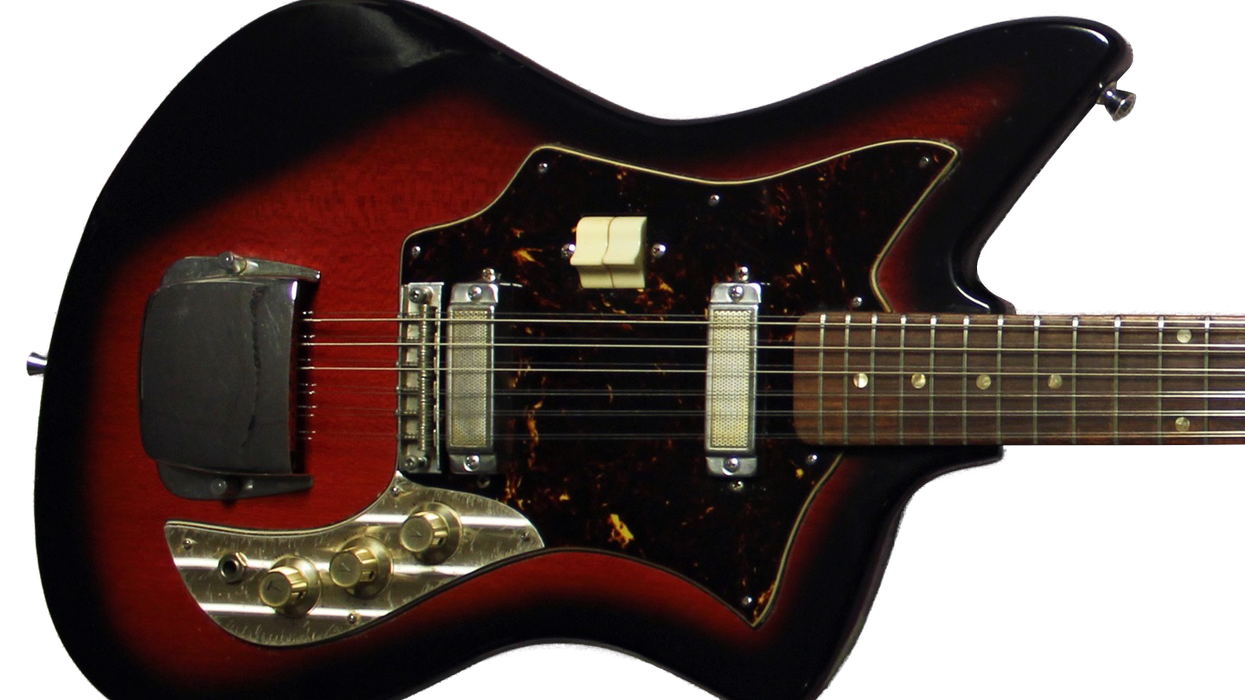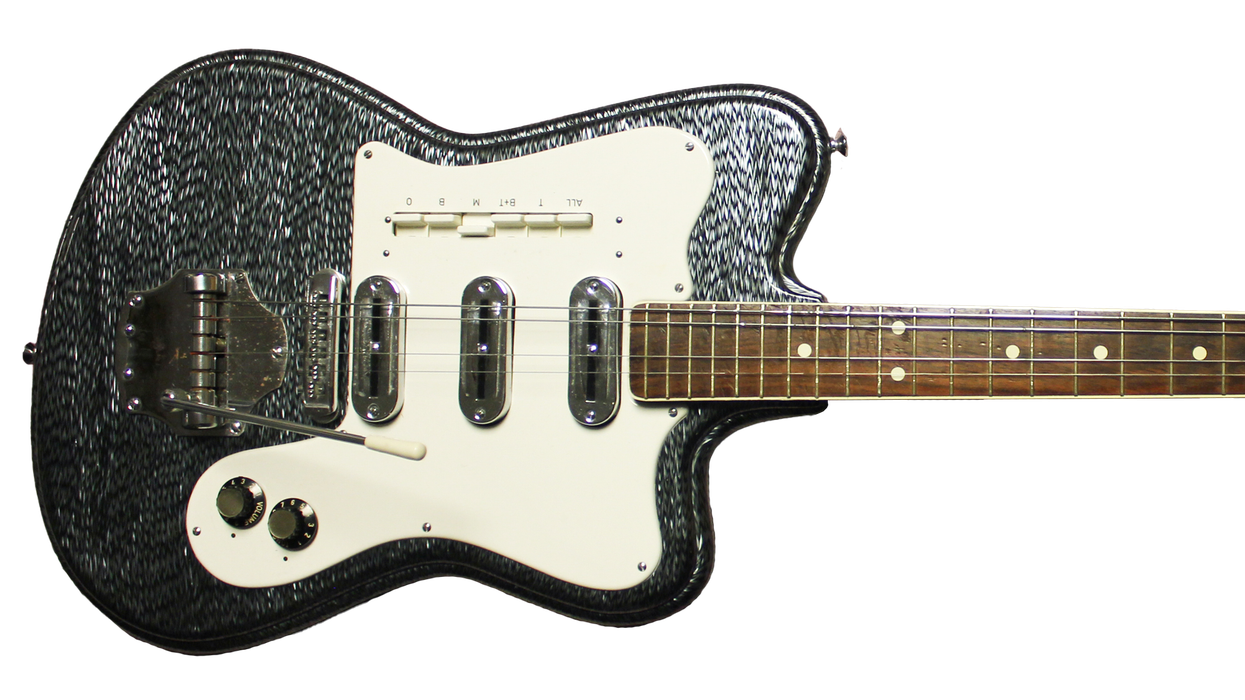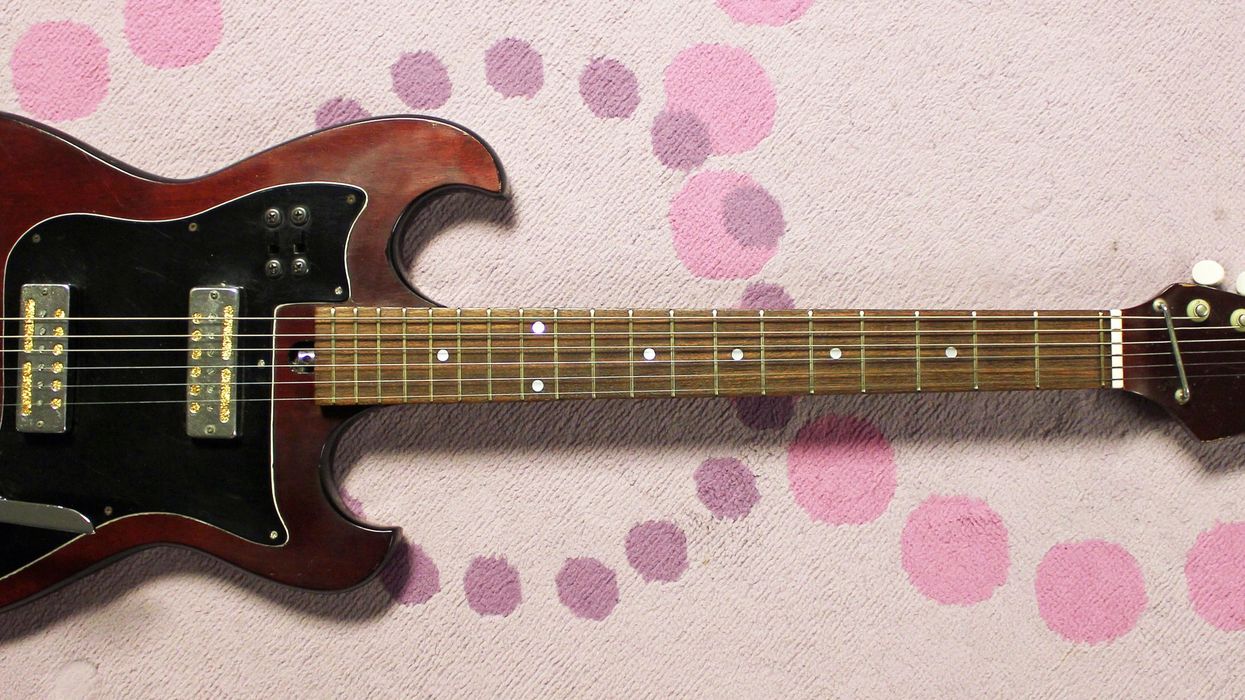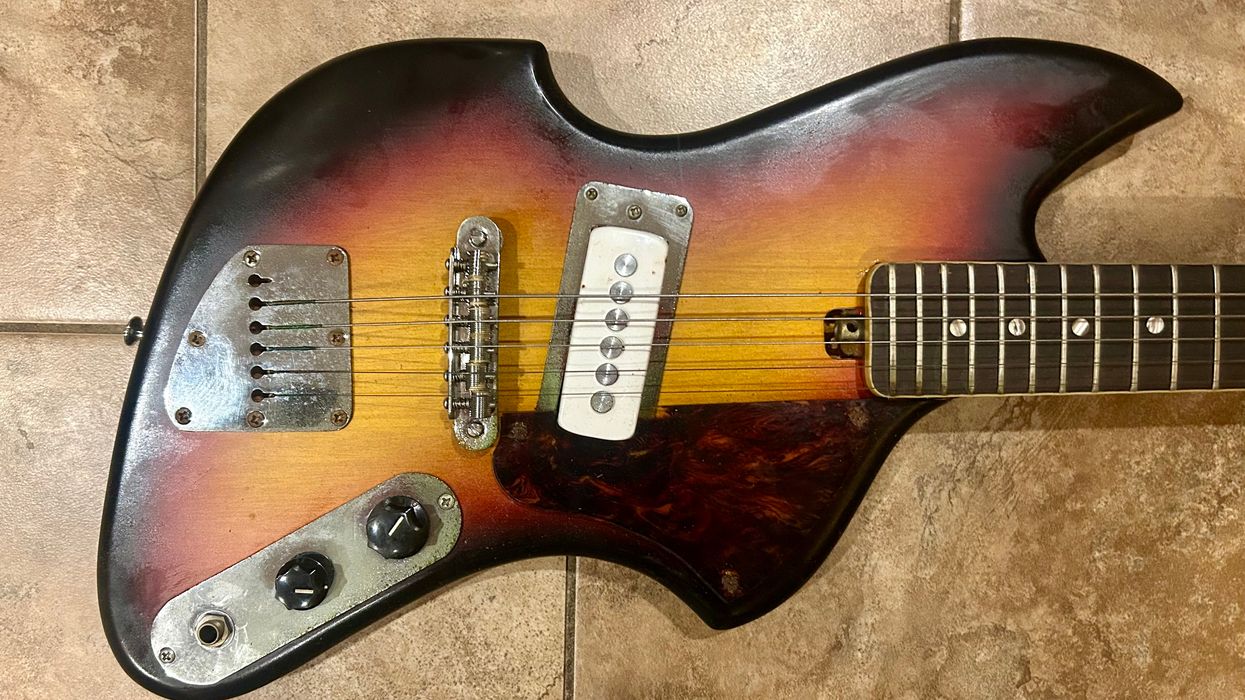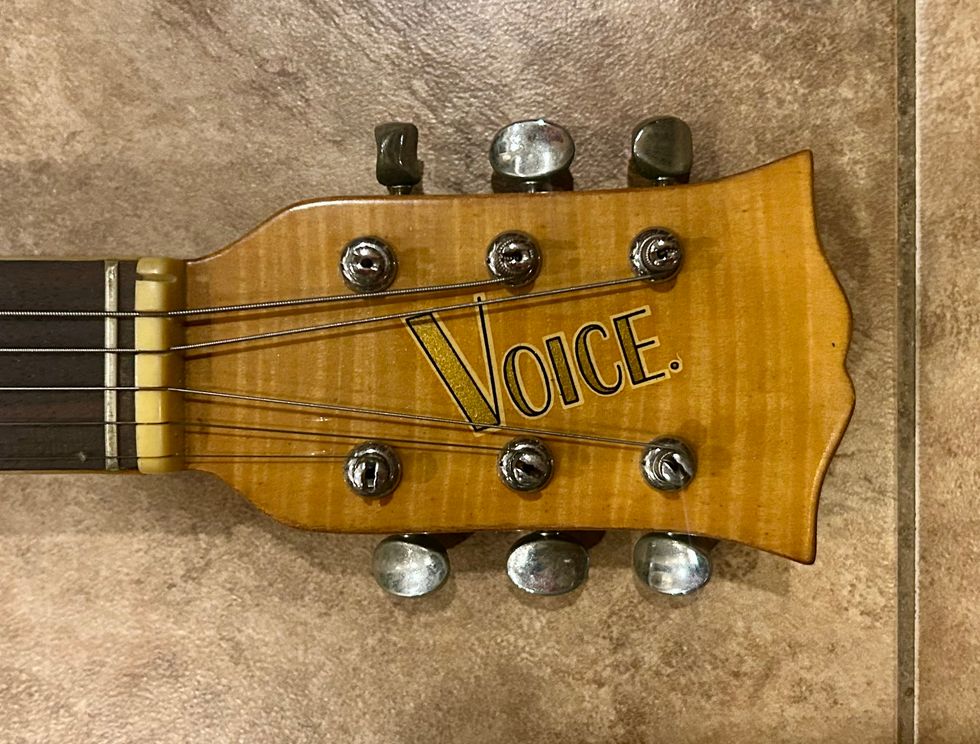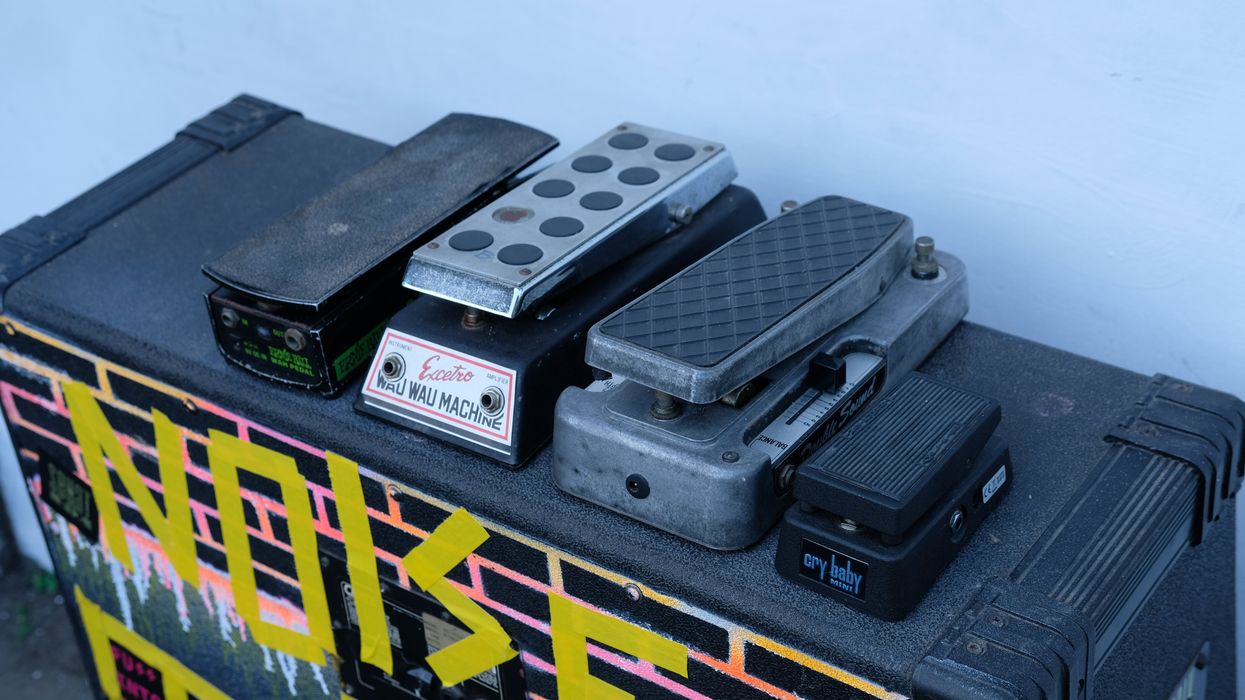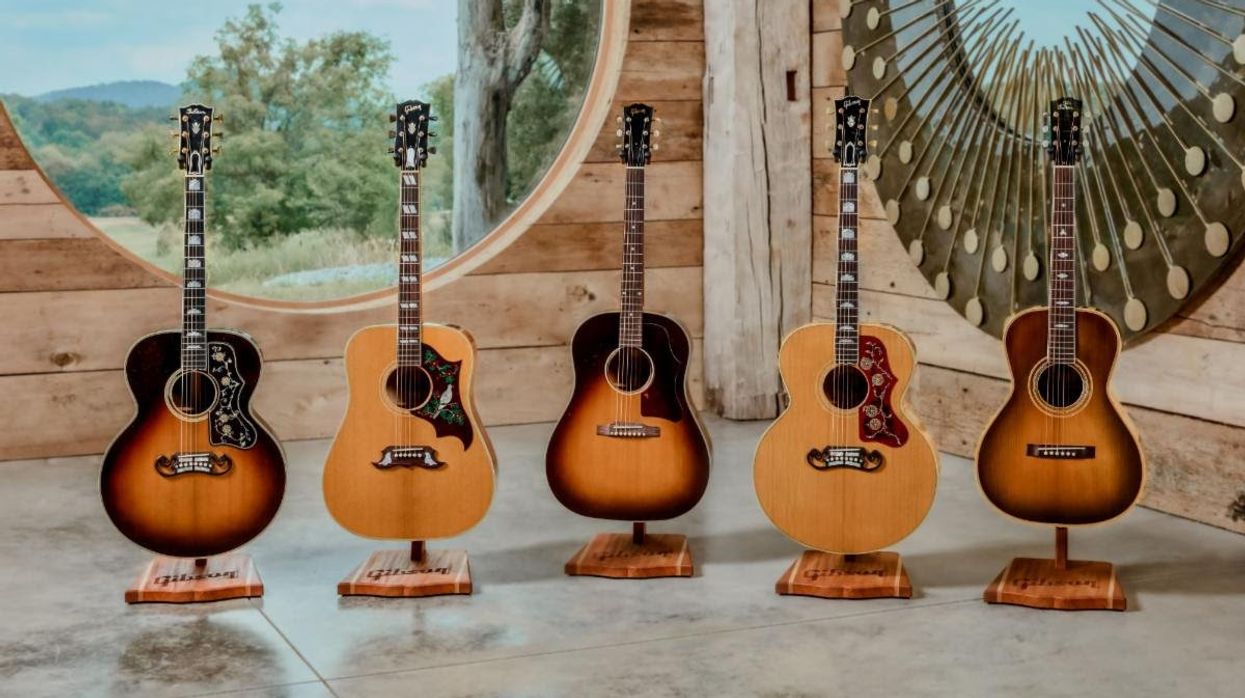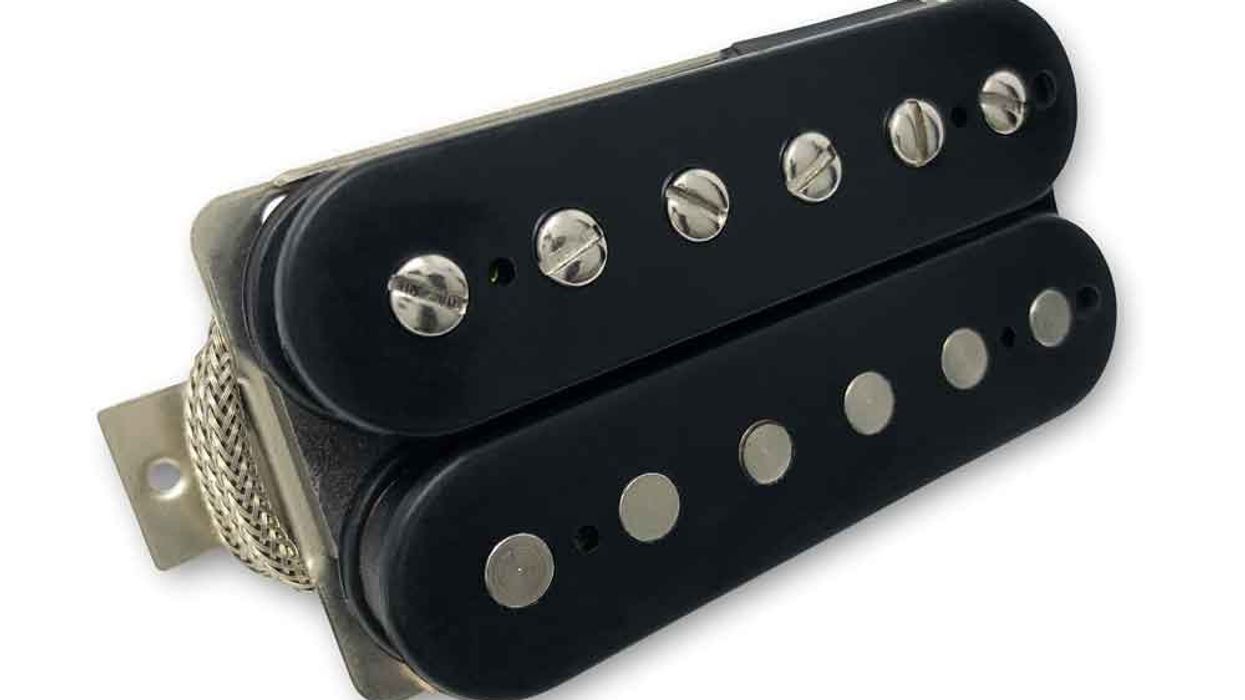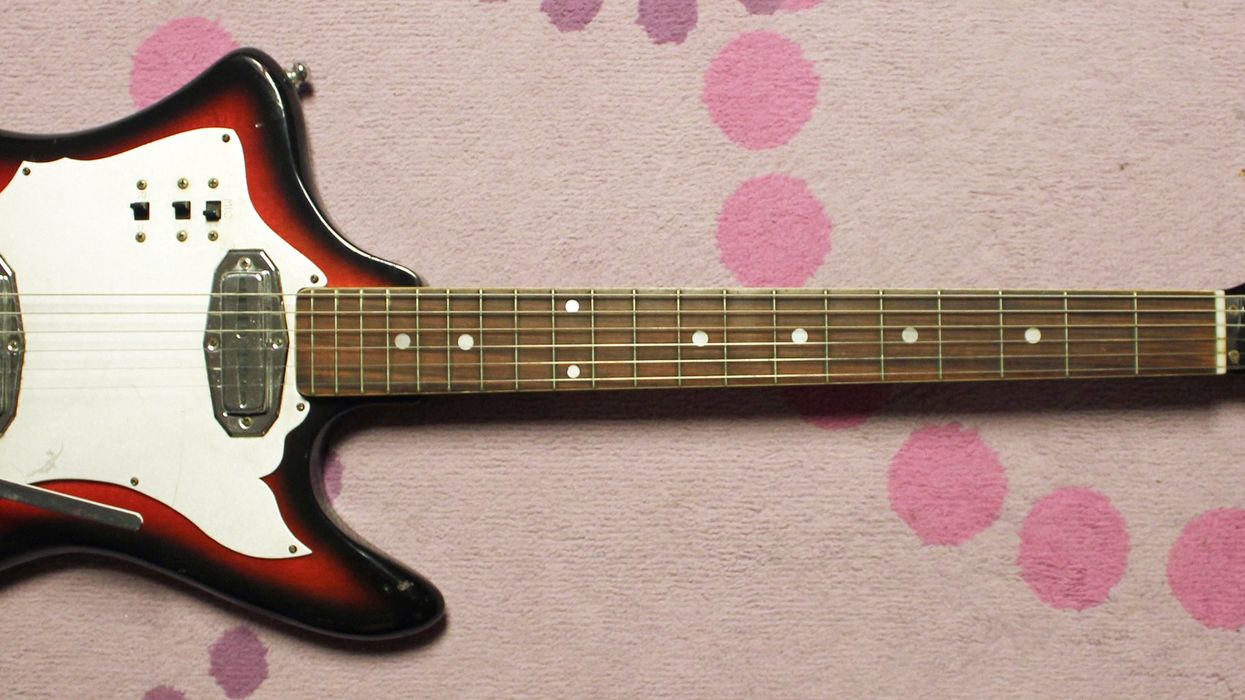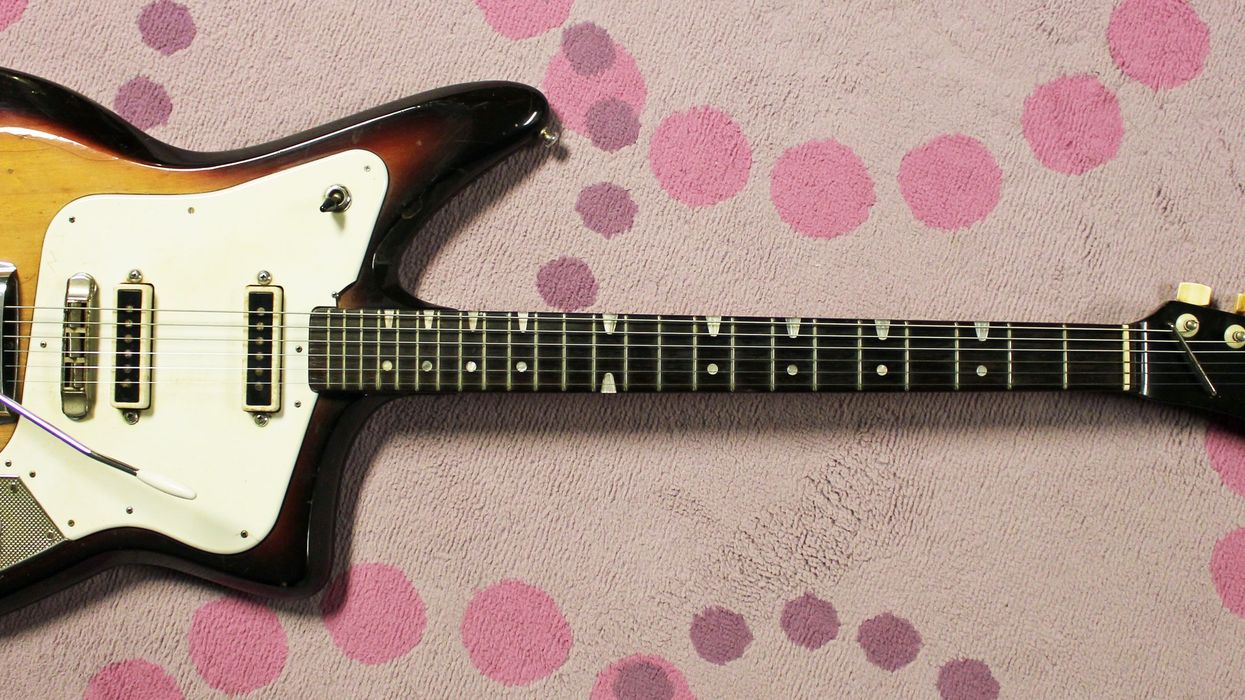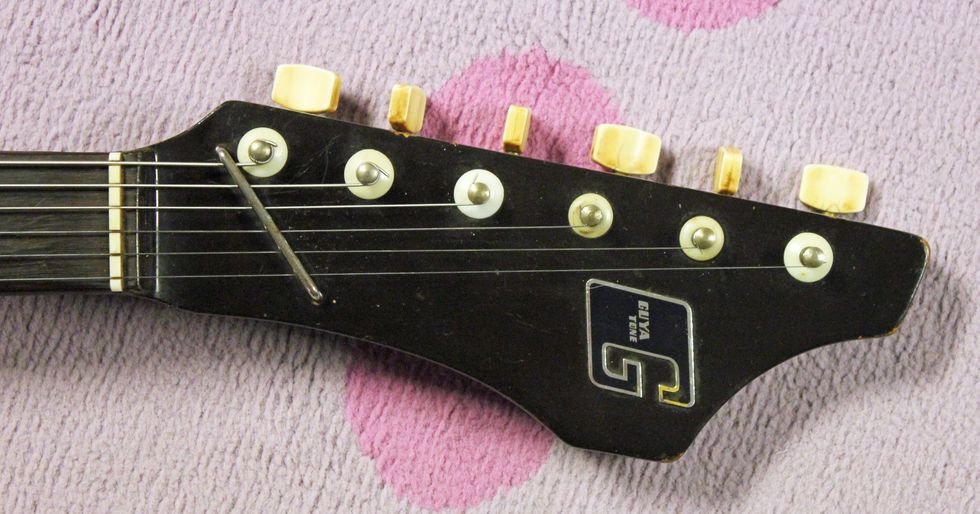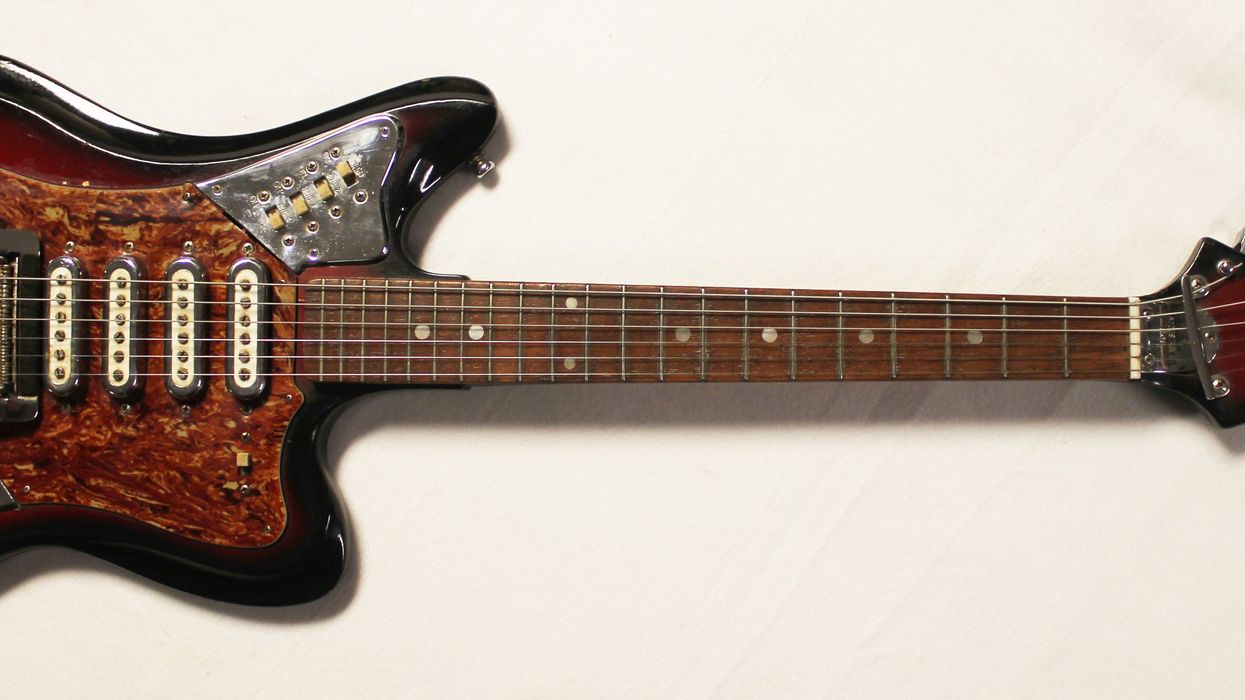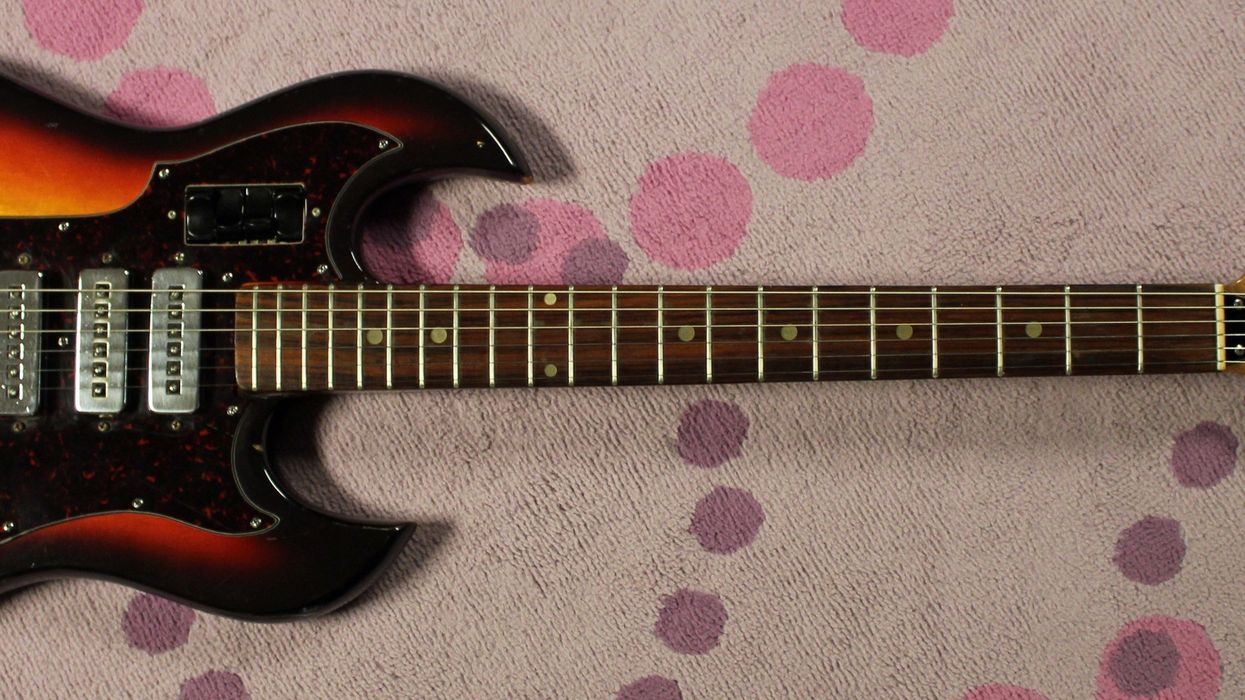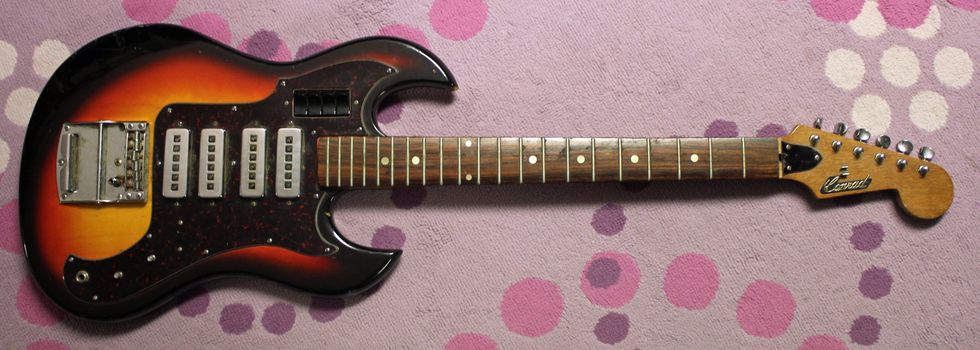I’ve had so many guitars pass in and out of my house that I often forget some of the cool little gems that I’ve owned. And I mention gems because, during a recent pawnshop crawl, I happened upon one of the cool, old Aria Diamond guitars with the rhinestone “gem” inlay. Finding these Diamond guitars back in the day was like hitting the guitar lottery! You just felt lucky with a diamond-head guitar.
Most players probably associate the Aria and Arai name with high-quality electrics from the late ’70s and early ’80s. Some of the later Aria Pro guitars are the stuff of legend and were made with the finest wood by the finest builders in the city of Matsumoto. But of course, I flock towards the kitschy diamond. Give me the cheap stuff!
I actually met the owner of Aria, Shiro Arai, back in 2015 when I visited the Aria factory. There was a small retail store/museum out in front, and as I entered, there was Arai plucking on a classical guitar. We began talking and sat there for a few hours in a lounge area. Guitar playing was a passion for him, and unlike many other guitar-factory founders, he could actually read music and was an accomplished player. He also had several vintage classical guitars displayed there, and man … did he have a cool collection. He also smiled a lot, which is a quality I look for in people these days. He was living a joyful existence, surrounded by the things he loved.
Aria guitars were always decent instruments out of the box, and that was mainly because, as a player himself, Arai felt it was important to have good quality control and good setups from the factory.
Arai started his company back in 1956 as a general import/export business, but soon he was focusing almost exclusively on guitars. He even became the Japanese importer of major guitar brands such as Framus, Guild, Rickenbacker, and Epiphone. Aria guitars were always decent instruments out of the box, and that was mainly because, as a player himself, Arai felt it was important to have good quality control and good setups from the factory. As a youth in the ’80s, I used to see tons of Aria guitars, and they seemed rather popular.
Using Aria as his company brand name, Arai utilized the famous Matsumoku factory for just about all his electric guitars. The earliest Aria electrics appeared around 1966, and several models featured the ultra-cool diamond logo, complete with a faux gem! From the get-go, Aria guitars were almost all copies or models that drew design inspiration from Gibson, Fender, Mosrite, Höfner, and Rickenbacker. But hidden at the low end of the price range was the strange 1532T. With an offset design, a sweeping lower bout, and exaggerated double cutaways, the guitar was unlike any other Aria guitar. This weirdo lasted into the 1970s, when almost every Japanese electric maker was focused on copies.
The 1532T has 21 frets and a Gibson scale. Aside from the body design, most of the components are standard Matsumoku fare. The two pickups are fine-sounding units—powerful single-coils that sound phenomenal. It’s operated with one volume and one tone knob, and its pickup switch is a 3-way toggle. The adjustable bridge works well, but sometimes has some sort of hard-plastic string guides. What really shines on these 1532T guitars is the tremolo, which was used on this model and the Mosrite copies (dubbed as the 1702T). Among the 1960s Japanese electric guitar makers, tremolo units were not that great as a whole. But this unit on the 1532T is fantastic, with great touch sensitivity and return (maybe it was those plastic bridge saddles?).
I think I’ve only owned a few other Diamond guitars, but that recent pawnshop visit reminded me how fun it is to find cool, old stuff. You gotta get out there, people! Maybe you’ll hit the lottery? You never know.


